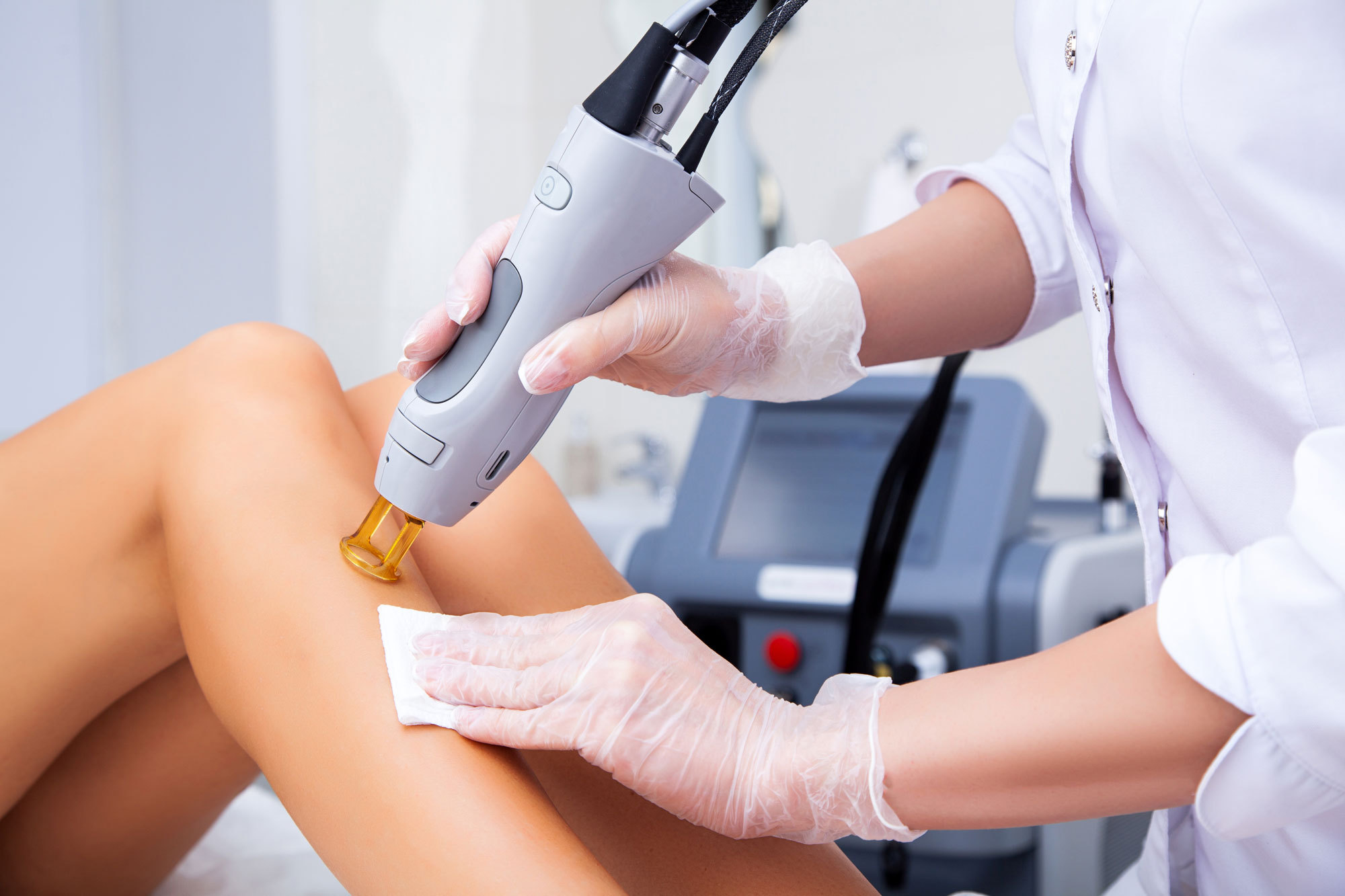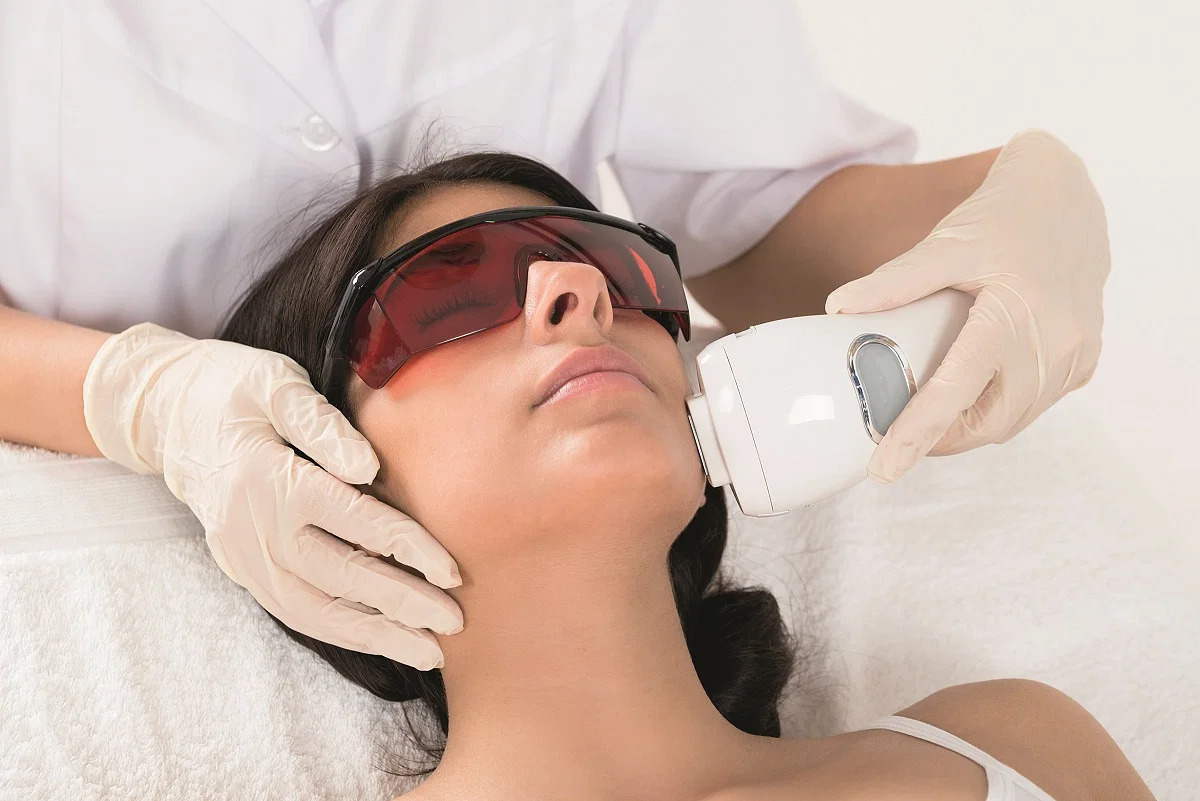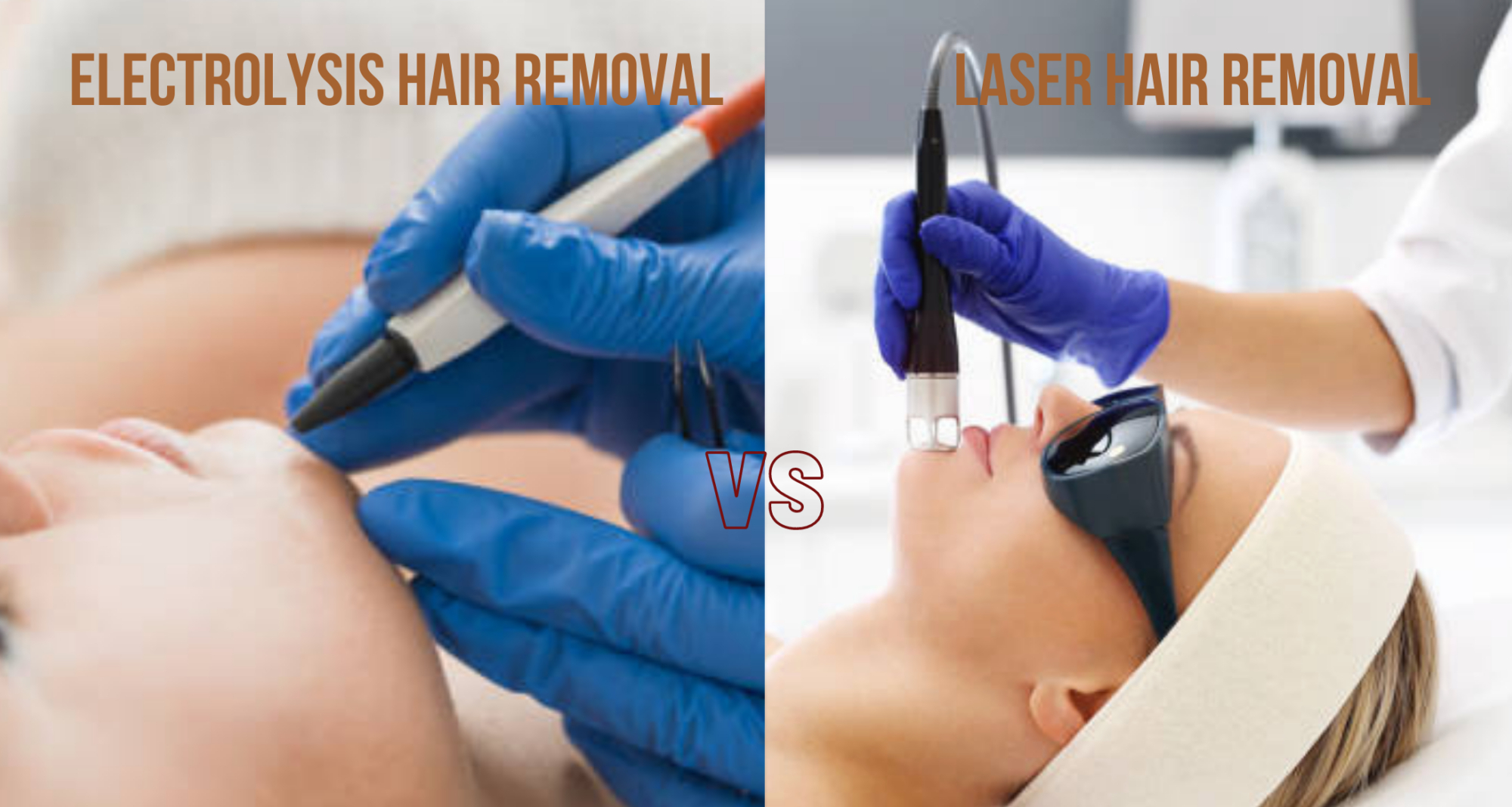

FAQs
What Is A Laser Hair Removal
Modified: September 23, 2023
Discover the answers to all your general questions about laser hair removal, including how it works, its effectiveness, and potential side effects. Start your journey to smooth and hair-free skin today!
(Many of the links in this article redirect to a specific reviewed product. Your purchase of these products through affiliate links helps to generate commission for Under-tec.com, at no extra cost. Learn more)
Table of Contents
- Introduction
- How Does Laser Hair Removal Work?
- Benefits of Laser Hair Removal
- Preparing for Laser Hair Removal
- What to Expect During Laser Hair Removal Treatment
- Aftercare for Laser Hair Removal
- Risks and Side Effects of Laser Hair Removal
- Comparing Laser Hair Removal with Other Hair Removal Methods
- Conclusion
Introduction
Laser hair removal has become an increasingly popular method of getting rid of unwanted hair. It offers a longer-lasting solution compared to traditional hair removal methods such as shaving, waxing, or plucking. With advancements in technology, laser hair removal has become more effective and accessible to a wider audience.
So, what exactly is laser hair removal? In simple terms, it is a cosmetic procedure that uses laser technology to target and destroy the hair follicles, preventing them from growing back. The procedure is safe and can be performed on various areas of the body, including the face, legs, arms, underarms, and bikini line.
Unlike temporary hair removal methods that only remove the hair shaft, laser hair removal targets the root of the hair follicle. The laser emits a highly concentrated beam of light that is absorbed by the pigment in the hair follicle, heating it up and damaging the follicle at its root. Over time, with multiple treatments, the hair follicles become permanently disabled, resulting in a significant reduction of hair growth in the treated area.
Laser hair removal is suitable for both men and women and is effective on a wide range of skin tones and hair colors. However, it is important to note that lighter hair colors, such as gray or white, may be less responsive to the treatment due to the lack of pigment in the hair follicle.
In the following sections, we will delve deeper into how laser hair removal works, discuss its benefits, and offer guidance on preparing for and aftercare following a laser hair removal treatment. We will also explore the potential risks and side effects, as well as compare laser hair removal with other hair removal methods.
How Does Laser Hair Removal Work?
Laser hair removal works by targeting the pigment, or melanin, in the hair follicle. The laser emits a concentrated beam of light that is absorbed by the pigment in the hair follicle, leading to its destruction and subsequent reduction in hair growth.
The process begins with a consultation with a trained professional who will assess your skin and hair type to determine the appropriate laser settings for your treatment. It is essential to provide accurate information about any medications, skin conditions, or recent sun exposure to ensure the procedure’s safety and effectiveness.
During the actual treatment, you will be given protective eyewear to shield your eyes from the laser’s intense light. The technician will then use a handheld device to apply the laser to the targeted area. The laser pulses are quick and may cause a tingling or snapping sensation on the skin. Many lasers now come equipped with a cooling mechanism to minimize discomfort and protect the surrounding skin.
The laser’s energy is absorbed by the pigment in the hair follicles, which heats and damages the follicle. This process is known as selective photothermolysis. The damaged follicles will either shed the existing hair or prevent further hair growth. Multiple sessions are usually required to achieve optimal results since hair grows in different phases and not all follicles are actively producing hair at the same time.
The effectiveness of laser hair removal depends on several factors, including the color and thickness of the hair, the location of the hair, and your individual skin type. Darker and thicker hair tends to respond better to laser treatments as they have a higher concentration of pigment. Lighter hair colors, such as blond or grey, may be less responsive to laser hair removal since they have less pigment to absorb the laser energy.
It is important to note that laser hair removal is not a one-size-fits-all solution. Each individual’s response to treatment may vary. It is crucial to consult with a certified professional to determine the best course of action based on your specific needs and goals.
Benefits of Laser Hair Removal
Laser hair removal offers numerous benefits over traditional hair removal methods. Here are some key advantages:
- Long-lasting Results: Unlike temporary methods such as shaving or waxing, laser hair removal provides long-lasting results. By targeting the hair follicles, the treatment can result in permanent hair reduction, leaving you with smooth, hair-free skin for an extended period.
- Precision and Efficiency: Laser hair removal targets specific areas, allowing for precise treatment and reducing the risk of damaging the surrounding skin. The technology can cover larger areas quickly, making it more efficient than time-consuming methods like plucking or waxing.
- Reduced Hair Growth: Over time, laser hair removal can significantly reduce hair growth in the treated areas. With each session, the hair becomes finer, sparser, and lighter in color, making it less noticeable and requiring fewer touch-ups.
- Less Discomfort: Compared to waxing or plucking, laser hair removal is generally less painful. The procedure may cause mild discomfort or a slight tingling sensation during treatment, but it is usually well-tolerated and can be made more comfortable with cooling techniques.
- Saves Time and Money: Laser hair removal eliminates the need for frequent shaving, waxing, or buying hair removal products, saving both time and money in the long run. While the upfront cost of laser hair removal may be higher, the long-term benefits make it a cost-effective choice.
- Improved Skin Quality: Constant hair removal methods like shaving and waxing can irritate the skin and lead to ingrown hairs or razor bumps. Laser hair removal reduces the occurrence of these issues, leaving the skin smoother and less prone to irritation.
- Flexibility and Versatility: Laser hair removal can be done on various body parts, including the face, legs, arms, underarms, bikini line, and more. This versatility allows you to customize your treatment and achieve optimal results in multiple areas.
It’s essential to note that laser hair removal is a gradual process, and individual results may vary. The number of sessions needed depends on factors such as hair type, skin type, and the targeted area. Consulting with a certified professional will help determine the treatment plan that best suits your specific needs and goals.
Preparing for Laser Hair Removal
Proper preparation is key to achieving the best results from your laser hair removal treatment. Follow these guidelines to ensure a successful and effective procedure:
- Avoid Sun Exposure: It is crucial to avoid sun exposure and tanning beds before your laser hair removal treatment. Sunburned or tanned skin can increase the risk of complications and interfere with the laser’s effectiveness. It is recommended to stay out of direct sun exposure for at least two weeks prior to your appointment.
- Avoid Hair Removal Methods that Target the Hair Follicle: In the weeks leading up to your laser hair removal treatment, avoid any hair removal methods that target the hair follicle, such as waxing, plucking, or electrolysis. These methods remove the hair from the root, which is the target for laser hair removal. Shaving is acceptable as it does not affect the hair follicle.
- Shave the Treatment Area: On the day of your laser hair removal appointment, make sure to shave the treatment area. This ensures that the laser can effectively target the hair follicles without interference from any hair above the skin’s surface.
- Avoid Applying Products to the Skin: Before your treatment, avoid applying any creams, lotions, or cosmetics to the skin in the treatment area. This helps to ensure that the laser can penetrate the skin evenly and effectively.
- Inform Your Technician: During your consultation or before the treatment, inform your technician about any medications, allergies, or medical conditions you have. Certain medications, such as antibiotics or photosensitizing drugs, can make your skin more sensitive to the laser. It’s important to provide accurate information to ensure your safety and the best possible outcome.
- Wear Loose and Comfortable Clothing: On the day of your treatment, wear loose and comfortable clothing that allows easy access to the treatment area. Tight or restrictive clothing can cause discomfort during the procedure.
- Follow Any Specific Instructions from Your Technician: Your technician may provide you with specific instructions to follow before your laser hair removal treatment. These instructions may include avoiding certain cosmetic products, avoiding exercise or sweating immediately before the appointment, or any other guidelines to ensure the best results.
By following these preparations, you can maximize the effectiveness and minimize any potential risks associated with laser hair removal. It’s important to communicate with your technician and ask any questions you may have to feel fully prepared and confident going into the procedure.
What to Expect During Laser Hair Removal Treatment
Understanding what to expect during a laser hair removal treatment can help you feel more prepared and at ease. Here is a general overview of what typically happens during the procedure:
- Cleanse the Treatment Area: Before the treatment begins, the technician will cleanse the treatment area to remove any oils, lotions, or debris that may interfere with the laser’s effectiveness.
- Protective Eyewear: You will be provided with protective eyewear to shield your eyes from the laser’s intense light. It is important to wear these goggles throughout the entire treatment for your safety.
- Laser Parameters: The technician will assess your skin type and hair color and set the appropriate laser parameters for your specific needs. This ensures that the laser is targeting the hair follicles effectively and safely.
- Test Pulse: Before proceeding with the full treatment, the technician may perform a test pulse on a small area of your skin to determine how your skin reacts to the laser. This step helps to ensure that the laser settings are suitable for your skin type and minimize the risk of any adverse reactions.
- Laser Application: Once the parameters are set, the technician will begin the laser hair removal treatment. They will use a handheld device that emits the laser beam. The laser will be applied to the treatment area in a systematic manner, targeting the hair follicles one by one.
- Sensation: You may experience a sensation during the treatment, such as a slight tingling, warming, or snapping sensation. Some areas of the body may be more sensitive than others, but most people find the discomfort to be tolerable.
- Cooling Techniques: Many laser devices now have built-in cooling mechanisms to help minimize discomfort and protect the surrounding skin. These cooling techniques can include a chilled tip or a burst of cold air immediately after the laser pulse.
- Treatment Time: The duration of a laser hair removal treatment session can vary depending on the size and number of areas being treated. Smaller areas like the upper lip or underarms may only take a few minutes, while larger areas like the legs or back may take up to an hour.
- Post-Treatment Care: After the treatment, the technician may apply a soothing gel or lotion to the treated area to minimize any potential redness or discomfort.
It is important to note that each individual’s experience with laser hair removal may vary. The number of sessions required for optimal results will depend on factors such as hair color, skin tone, and the targeted area.
Consulting with a trained professional and following their guidance will ensure that you have a clear understanding of what to expect during your laser hair removal treatment. They will address any concerns or questions you may have, helping to make the experience as comfortable and successful as possible.
Aftercare for Laser Hair Removal
Proper aftercare is crucial to ensure that you achieve the best possible results and promote healing after a laser hair removal treatment. Here are some essential aftercare steps to follow:
- Avoid Sun Exposure: After your treatment, it is important to avoid direct sun exposure for at least two weeks. The treated area may be more sensitive to sunlight, and exposure can increase the risk of complications or unwanted side effects. If you need to go outside, make sure to apply a broad-spectrum sunscreen with a high SPF to protect your skin.
- Avoid Hot Showers and Baths: For the first 24-48 hours after your treatment, avoid hot showers, baths, saunas, or activities that can cause excessive sweating. Hot water can irritate the treated area, and sweating can increase the risk of infection.
- Avoid Scrubbing or Exfoliating the Skin: While it is important to keep the treated area clean, avoid scrubbing or exfoliating the skin for at least one week after the treatment. This allows the skin to heal and reduces the risk of irritation or damage.
- Avoid Hair Removal Methods that Target the Follicles: After laser hair removal, avoid any hair removal methods that target the hair follicles, such as waxing, plucking, or electrolysis. These methods can disrupt the hair follicles and interfere with the results of your treatment.
- Moisturize the Skin: Keep the skin in the treated area well-hydrated by applying a gentle moisturizer. This helps to soothe the skin, reduce any redness or irritation, and promote healing. Choose a moisturizer that is fragrance-free and formulated for sensitive skin.
- Avoid Tight Clothing: Opt for loose-fitting and breathable clothing to prevent irritation and friction in the treated area. Tight clothing can rub against the skin and cause discomfort or potential complications.
- Avoid Chemicals or Harsh Products: Refrain from using harsh chemicals, peels, or scrubs on the treated area. These can cause irritation and delay the healing process. Stick to gentle and mild skincare products until the skin has fully recovered.
- Attend Follow-up Sessions: Laser hair removal typically requires multiple sessions to achieve optimal results. It is important to attend all scheduled follow-up sessions as recommended by your technician. These sessions are essential for maintaining the long-term effects of the treatment and reducing hair growth.
Remember to consult with your technician for specific aftercare instructions tailored to your individual needs. They will provide you with personalized guidance based on the treated area, your skin type, and hair color to ensure the best outcome.
By following these aftercare guidelines, you can support the healing process and maximize the results of your laser hair removal treatment.
Risks and Side Effects of Laser Hair Removal
While laser hair removal is generally considered safe and effective, there are some potential risks and side effects associated with the treatment. It is important to be aware of these before undergoing the procedure:
- Skin Irritation: Following laser hair removal, some temporary skin irritation is normal. This may include redness, mild swelling, or a sunburn-like sensation in the treated area. These effects usually subside within a few hours or days.
- Pigmentation Changes: Laser hair removal may cause temporary changes in skin pigmentation. Darker or lighter patches of skin, known as hyperpigmentation or hypopigmentation, may occur. These changes are usually temporary and fade over time, but there is a small risk of longer-lasting pigmentation changes.
- Burns or Blisters: In rare cases, laser hair removal can cause burns or blisters on the skin. This risk is higher if the laser settings are too high for the individual’s skin type or if there is improper use of the laser device. Proper cooling techniques and following the technician’s instructions can minimize the risk of burns or blisters.
- Scarring: While rare, scarring may occur as a result of laser hair removal. This is more likely in individuals with a history of keloids or who have had previous scarring in the treatment area. It is important to discuss your medical history with your technician to assess the risk of scarring.
- Eye Injury: The intense light emitted by the laser can be harmful to the eyes. Wearing the provided protective eyewear during the treatment is essential to protect your eyes from potential damage.
- Herpes Outbreak: If you have a history of oral or genital herpes, laser hair removal in those areas may trigger a herpes outbreak. Inform your technician of any history of herpes so that appropriate precautions can be taken.
- Effectiveness Variation: The effectiveness of laser hair removal can vary depending on individual factors such as hair color, skin type, and the targeted area. Darker, thicker hair tends to respond better to treatment than lighter or finer hair. Multiple sessions may be necessary to achieve desired results.
It is essential to choose a reputable and qualified professional with experience in performing laser hair removal. They will assess your skin and hair type, provide appropriate treatment options, and minimize the risk of complications. Following pre-treatment and aftercare instructions can also help reduce the chances of experiencing side effects.
If you experience any severe or prolonged side effects, such as severe pain, burns, or excessive blistering, it is important to seek immediate medical attention.
Comparing Laser Hair Removal with Other Hair Removal Methods
When it comes to hair removal, there are several options available, each with its own advantages and disadvantages. Let’s compare laser hair removal with other common hair removal methods:
- Shaving: Shaving is a quick and inexpensive hair removal method, but the results are short-lived. The hair grows back relatively quickly, and there is a risk of cuts, ingrown hairs, and razor burn. Laser hair removal provides longer-lasting results and can target larger areas more efficiently.
- Waxing: Waxing removes hair from the root, providing a longer period of hair-free skin compared to shaving. However, waxing can be painful, and the hair needs to grow to a certain length before it can be waxed again. Laser hair removal offers a more convenient and less painful option for long-term hair reduction.
- Depilatory Creams: Depilatory creams dissolve the hair at the skin’s surface. While they are relatively painless, the results are short-term, and the chemicals in these creams can cause skin irritation or allergic reactions. Laser hair removal offers a more permanent solution without the risk of skin irritation.
- Plucking and Tweezing: Plucking and tweezing are effective for removing individual hairs, but they can be time-consuming and may cause discomfort. These methods are not practical for large areas of hair removal. Laser hair removal offers a more efficient and less painful solution for treating larger areas with multiple hair follicles.
- Electrolysis: Electrolysis is a hair removal method that treats hair follicles individually using electrical current. It is considered a permanent hair removal method, but it can be a lengthy and costly process. Laser hair removal, on the other hand, can target multiple hair follicles simultaneously, making it faster and more cost-effective for large areas.
- Intense Pulsed Light (IPL) Hair Removal: IPL hair removal uses broad-spectrum light to target the hair follicles. While similar to laser hair removal, IPL devices are not as focused or specific in their targeting, which may result in less permanent hair reduction. Laser hair removal offers more precise and effective results.
Laser hair removal stands out as a highly effective and efficient method for achieving long-term hair reduction. It provides relatively long-lasting results, can be performed on various body areas, and is suitable for a wide range of skin tones and hair colors. Additionally, laser hair removal reduces the risk of common issues associated with other methods, such as ingrown hairs, cuts, or skin irritation.
However, it’s important to keep in mind that laser hair removal may not be suitable for everyone. Factors such as hair color, skin type, and individual response to treatment can affect its effectiveness. Consulting with a qualified professional can help determine if laser hair removal is the right choice for your specific needs and goals.
Conclusion
Laser hair removal is an effective and popular method for long-term hair reduction. By targeting the hair follicles, it provides more permanent results compared to traditional hair removal methods like shaving or waxing. The procedure works by using laser technology to heat and damage the hair follicles, preventing them from regrowing hair.
There are numerous benefits to choosing laser hair removal. It offers long-lasting results, saves time and money in the long run, and reduces the need for frequent hair removal treatments. Laser hair removal is versatile, allowing treatment on various body areas, and can be performed on a wide range of skin tones and hair colors.
Proper preparation and aftercare are essential for a successful laser hair removal treatment. It is important to follow pre-treatment guidelines like avoiding sun exposure and refraining from hair removal methods that target the hair follicles. After the treatment, practicing good aftercare habits, such as protecting the skin from sun exposure and avoiding harsh chemicals, can help promote healing and minimize any potential side effects.
While laser hair removal is generally safe, there are risks associated with the procedure, including skin irritation, pigmentation changes, and the possibility of burns or blisters. It’s important to choose a reputable professional and communicate any medical history or concerns to minimize the risk of complications and achieve the best possible results.
Comparing laser hair removal to other hair removal methods, it stands out as a more efficient and effective option. It provides longer-lasting results compared to temporary methods like shaving or depilatory creams. Laser hair removal can target larger areas of hair growth and offers a more convenient solution for long-term hair reduction compared to methods like waxing or plucking.
Overall, laser hair removal is a valuable option for individuals seeking a more permanent solution to unwanted hair. By understanding the process, benefits, risks, and aftercare considerations associated with laser hair removal, you can make an informed decision and achieve smoother, hair-free skin in the long run.








